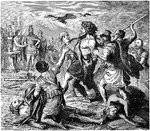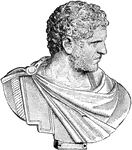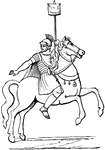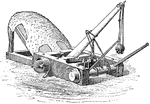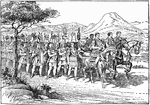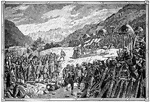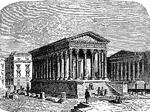
The Square House of Nîmes
The square house of Nîmes is also known as Maison Carree. It is an ancient Roman temple located in…
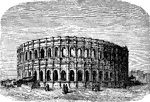
The Arena of Nîmes
The arena of Nîmes is a Roman amphitheater located in city of Nimes, France. The amphitheater was built…
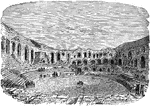
The Amphitheater of Arles
The amphitheater of Arles is a roman amphitheater in the southern French town of Arles. It is still…

Pont du Gard
The Pont du Gard is an aqueduct and bridge that was built over the Gard River by the Roman Empire. It…

Mosque of Cordoba
The Mosque of Cordoba was a former mosque and today is a Roman Catholic Cathedral located in the Andalusian…
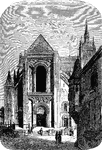
Cathedral of Mans
The Cathedral of Mans is a Roman Catholic Cathedral located in Le Mans, France. The Cathedral was built…

Cathedral of Chartres
The cathedral of Chartres is a roman catholic cathedral in Chartres, France. Built in a Gothic style,…

Cathedral of Rheims
The Cathedral of Rheims is also known as Notre-Dame de Rheims in French. It is a Roman Catholic Cathedral,…

Cathedral of Strasbourg
The cathedral of Strasbourg is a Roman Catholic cathedral located in Strasbourg, France. The church…

Metz Cathedral
The Metz Cathedral is also known as the St. Etienne de Metz in French. It is a Roman Catholic church…

Cathedral of Sienna
The Cathedral of Siena is a Roman Catholic Marian church located in Siena, central Italy. A medieval…

Theater of Vitruvius
The Theater of Vitruvius was a Roman Theater, named after Roman writer, architect and engineer Vitruvius…

Houses of Parliament, Westminster; Plan of Principal Floor
This is the Plan of Principal Floor of the Houses of Parliament in Westminster, England. Other wise…

Glyptothek at Munich
"In contrast to the Berlin school is that of Munich, which was founded by Gärtner. Its influence, which…

Lazarist Church at Vienna
"In this city many individual tendencies are perceptible, but the predominant inclination is toward…
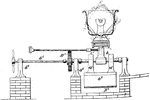
Reversible Enameling Cradle
Enameling is an old and widely adopted technology. The ancient Egyptians applied enamels to pottery…

Electric Energy Clock
An electric clock is a clock that is powered by electricity instead of powered manually or by other…
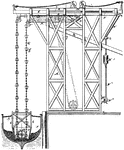
Elevating Apparatus
The first reference to an elevator is in the works of the Roman architect Vitruvius, who reported that…

Long Case Clock
A longcase clock, also tall-case clock, floor clock, or grandfather clock, is a tall, freestanding,…
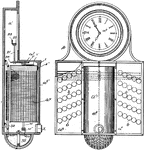
Workman's Time Recorder
A time clock, sometimes known as a clock card machine or punch clock or time recorder, is a mechanical…
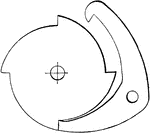
Noiseless Clock Ratchet
"In some of the cheap American alarm clocks there is used a simple ratchet—wheel which has the…
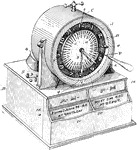
Memograph Clock
A Memograph is a clock that is designed to make a loud sound at a specific time. The primary use of…
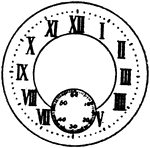
Watch and Clock Dial
This dial features a clock face which is the part of an analog clock that displays the time through…
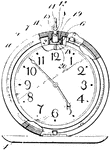
Self Winding Watch
This stem winding watch is a mechanical watch which is wound automatically by the natural motion of…
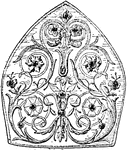
Mitre of Roman Catholic ArchBishop of Westminster Cardinal Vaughan
A mitre of Cardinal Vaughahan from the Roman Catholic Archbishop of Westminster. The hat was worn by…
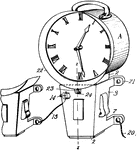
Secondary Electric Clock
This is a timepiece that shows the time of the day, using a small electric motor
Decorative Letter M
An illustration of a decorative letter M with a man who looks like a roman soldier inside.
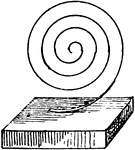
Clock Spring
An illustration of a clock spring which is a special rotary electrical connector. The clock spring allows…

Notre Dame Cathedral
An illustration of Notre Dame Cathedral in Paris, France. This building is also known as Notre Dame…
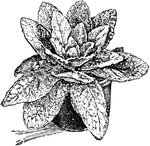
Verbascum Thapsus
Bears yellow toned flowers, used as funeral torches in early Greek and Roman society.

Circus Maximus
"Chariot-racing was a favorite amusement, and the great circuses were arranged especially for such contests.…

Julius Caesar
An image depicting Julius Caesar, a Roman general and statesman. He was a key component to the shift…
!["After a successful summer campaign, [Caesar] made his way to the coast and cross over into Britain. He then withdrew into his winter-quarters in Gaul, but in the following year returned into the island, defeated the British Celts under their king Cassivellaunus, and reduced the country to a dependency, compelling the Britons to pay tribute and give hostages."](https://etc.usf.edu/clipart/78900/78943/78943_landing_01_mth.gif)
Landing of the Romans in Britain
"After a successful summer campaign, [Caesar] made his way to the coast and cross over into Britain.…
Caesar Crossing the Rubicon
An image of Julius Caesar and his army crossing the Rubicon River, which is located in northeastern…
!["[Caesar] mustered the soldiers in the Campius Martius, and requested a statement of their grievances. Their demands appeared to have a reference to a payment of their dues, the bestowal of promised presents, and a release from further duty. Caesar well knew that the best way to humiliate an insurrection is to grant what it clamors for. He accordingly made an address to his old legion, being careful to begin with "Citizens," instead of "Soldiers." This was gall and wormwood. To be addressed as citizens by their beloved commander! "I discharge you." said he. "You have had enough of fatigue and wounds. I release you from your oath. As to your presents, you shall be paid to the last sesterce." The old veterans could stand no more. They burst into tears, and began to beg for forgiveness. With a certain prudent hesitation, Caesar received them back to favor; but he took care that the leaders who had fomented the mutiny should be executed."—Ridpath, 1885](https://etc.usf.edu/clipart/78900/78945/78945_citizens_01_mth.gif)
Citizens! I Discharge You.
"[Caesar] mustered the soldiers in the Campius Martius, and requested a statement of their grievances.…
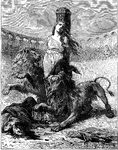
Christians Given to the Lions in the Roman Amphitheater
"More particularly was the new sect of Christians selected as the objects of vengeance. These people…

Antinous
"It was during Hadrian's sojourn in this country that his favorite, the beautiful Birthynian named Antinous,…
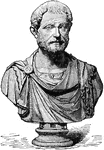
Probus
"The next Emperor was Aurelius Probus, officer of the army of Germany. He was chosen by the legions,…
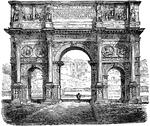
Arch of Constantine
The Arch of Constantine was erected to celebrate Constantine's victory of Maxentius at the Battle of…
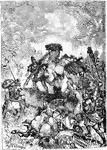
Death of Julian the Apostate
A depiction of Julian the Apostate, a noted philosopher and Roman Emperor, and his death.
!["In order that [Alaric's] body might be saved from the gaze of the vulgar and the rage of his foes, he gave direction that it should be buried in the bed of the river Busentinus."—Ridpath, 1885](https://etc.usf.edu/clipart/78900/78952/78952_alaricburial_mth.gif)
The Burial of Alaric in the Bed of the Busentinus
"In order that [Alaric's] body might be saved from the gaze of the vulgar and the rage of his foes,…
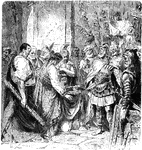
Odoacer Compels Augustulus to Yield the Crown
Augustulus is deposed from the crown by Odoacer, and was thus the last Western Roman Emperor.
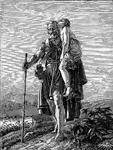
Blind Belsarius
Belsarius was ordered to have his eyes put out, and was reduced to a homeless beggar.

Roman Boy
"The two chief avenues that were open to advancement were the political and the military. He must be…

Consul and Lictors
The consul was the highest elected office of the Roman Republic. They were elected every year. The lictors…

Gallic Remains
"1 and 3, necklaces with amber and coral pendants; 2, military standard; 4, bronze trumpet; 5, iron…

Tormenta Within a Fortified Camp
"The romans had no knowledge of gunpowder, siege cannon, or field guns; but the place of modern artillery…

Vexillum
A flag-like object. The cloth was draped from a horizontal cross suspended from the staff. It was a…
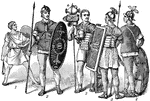
Roman Soldiers and Equipment
"1, funditor; 2, 2, milites levis armaturae; 3, 3, legionarii; 4, sarcina."—D'ooge & Eastman,…

Castra Romana
"A, via principalis. B, via documana. C, porta praetoria. D, porta decumana. E, portq principalis dextra.…
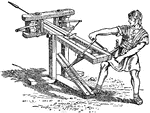
A Catapult
A catapult as used during the Roman Empire. The catapult is an effective device used to hurl an object…

